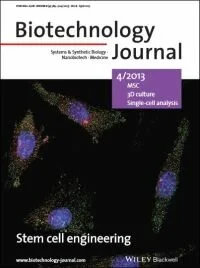The therapeutic promise of stem cells is well advertised. Stem cell-derived therapies are amongst the exciting and high profile treatments currently entering the clinic. More than 2000 clinical trials using stem cells have been performed or are currently in progress. Commercial interest in cell-based therapies is reflected by the $85 million of capital captured by publically traded US-based cell therapy companies in the first quarter of 2012.
A major barrier to achieving clinical success is obtaining the millions of cells required for a single-dose reproducibly and at high purity. In a recent issue of Biotechnology Journal, Joaquim Cabral and his team from the Technical University of Lisbon demonstrate how judicious selection of bioreactor design becomes critical to achieving a successful stem cell product. Currently, most stem cell products in transition to the clinic rely on conventional static culture cell techniques. Simply scaling up static culture constrains the throughput of cell therapy product manufacture due to limited cell expansion, high processing time and high labour intensity. New bioreactor formats are able to support the particular needs of stem cells in culture and allow integrated cell isolation, enrichment, expansion and purification processes to be performed within one closed system. dos Santos et al. consider how the end product and therapeutic goal inform process development. Allogeneic therapies, where a small number of product variations are produced as an “off-the-shelf” product, reap the benefits of economy of scale inherent in efficient, large scale, high expansion processes. In contrast, personalised autologous therapies require high product throughput, fast process turnaround and a considerably smaller production scale. / by Fran Harding
Bioreactor design for clinical-grade expansion of stem cells by dos Santos, F. F. et al.
Further reading: “Stem Cell Engineering” special issue in Biotechnology Journal, edited by Sean Palecek and Brenda Ogle

